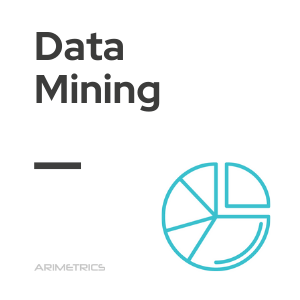
Definition:
The data mining or data mining is the process of analyzing the hidden patterns of data according to different perspectives of categorization into useful information, which is collected and assembled in common areas, such as data warehouses, for efficient analysis, data mining algorithms, facilitating business decision making and other requirements necessary to obtain the information to ultimately reduce costs and increase revenues.
The most commonly used algorithms for data mining are classification algorithms and regression algorithms, which are used to identify relationships between data elements. Major database vendors such as Oracle and SQL incorporate data mining algorithms, such as clustering and regression, to meet the demand for data mining.
What is data mining for?
Data mining is a process of extracting useful patterns and insights from large volumes of data. Through statistical techniques and algorithms, it is possible to identify hidden trends and meaningful relationships that are not obvious to the naked eye. This is especially valuable in areas such as marketing, where it enables customer segmentation and personalization of offers, as well as in fraud detection, where suspicious behavior in financial transactions can be identified. In addition, data mining is used to make predictions based on historical data, optimize business operations and generate personalized recommendations on digital platforms. Its application spans multiple sectors, from healthcare to commerce, helping organizations make informed decisions and improve their overall performance. In short, it is an essential tool in the era of big data that transforms data into valuable information.
Data Mining Process
The data mining process is a systematic approach that includes several steps to transform raw data into useful information. The key phases of this process are described below.
- Problem definition: Before starting, it is essential to clearly define the objective of the analysis. This includes identifying what questions you want to answer and what kind of results you expect.
- Data collection: In this phase, relevant data is gathered from a variety of sources, which may include internal databases, archives, transaction logs, and external data.
- Data preprocessing: Collected data often contain errors, missing values, or inconsistencies. This stage involves cleaning and transforming the data to ensure its quality and suitability for analysis.
- Data exploration: Preliminary analyses are performed to better understand the structure and characteristics of the data, including visualizations and descriptive statistics.
- Algorithm selection: Depending on the objective of the analysis, the most appropriate data mining algorithms are selected.
- Modeling: The selected algorithms are applied to the data to build predictive or descriptive models.
- Model evaluation: The effectiveness of the model is evaluated using specific metrics to ensure that it meets the established objectives.
- Implementation: If the model is satisfactory, it is implemented in the production environment, integrating it into existing systems.
- Monitoring and maintenance: It is important to measure and evaluate the performance of the model and make adjustments as necessary.
- Communication of results: Findings and recommendations should be effectively communicated to stakeholders.
Advantages of data mining
Data mining offers multiple benefits to organizations, allowing them to extract valuable information from large volumes of data. Below are some of the main advantages it provides.
- Informed decision making: Enables companies to base their decisions on hard data, identifying patterns and trends that facilitate a more strategic approach.
- Customer segmentation: Helps classify customers into specific groups, allowing you to customize marketing strategies and improve the effectiveness of campaigns.
- Fraud detection: Facilitates the identification of unusual transactions, contributing to security in sectors such as banking and insurance.
- Operations optimization: Allows to analyze internal processes and detect inefficiencies, which can result in higher productivity and cost reduction.
- Trend forecasting: Through predictive models, companies can anticipate changes in the market and consumer behavior, enabling proactive adaptation.
- Improved customer service: Analyze customer interactions to identify areas for improvement, personalizing the user experience.
- Research and development: In fields such as medicine, it helps to analyze clinical and genetic data, contributing to the discovery of new treatments and drugs.
Tools used for data mining
There are several tools that facilitate the data mining process, each with specific characteristics that adapt to different analytical needs. Some of the most commonly used in the industry are listed below.
- Oracle Data Mining: Integrated in Oracle databases, it offers tools to perform complex analysis and apply classification and regression algorithms.
- SQL Server Analysis Services: Allows users to perform data analysis and build predictive models using data mining techniques.
- RapidMiner: An open source platform that provides an environment for data preparation, machine learning and predictive analytics.
- KNIME: Data analysis tool that allows the integration of different data sources and the application of data mining algorithms.
- Weka: An open source software that contains a collection of machine learning algorithms for data mining tasks.
- Python and R: Programming languages that, through specific libraries such as Pandas, Scikit-learn (Python) and caret (R), are widely used for data mining and statistical analysis.
- Tableau: Data visualization tool that allows users to explore and analyze data through interactive graphics, facilitating the identification of patterns.
